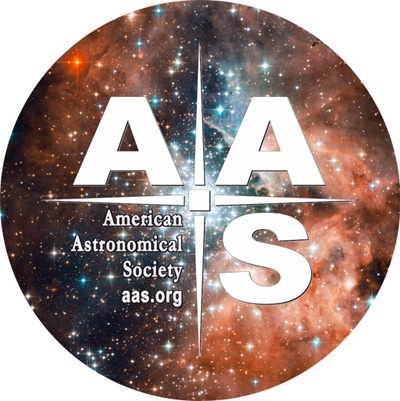16 June 2021
Susanna Kohler

Artist’s illustration of the surroundings of a supermassive black hole at the heart of an active galaxy. Credit: M. Kornmesser/ European Southern Observatory [Observatoire européen austral][Europäische Südsternwarte] (EU) (CL)]
What’s going on deep in the centers of active galaxies, close around the supermassive black holes feeding off of their surroundings? A new study uses infrared observations to explore this inner region in one active galaxy.

A Unified Picture?
We know that active galactic nuclei (AGN) consist of a supermassive black hole accreting surrounding material and shining brightly across the electromagnetic spectrum. But the structure of the gas and dust close around the black hole, and the causes of the different emission we see, have remained a topic of debate.
Decades ago, scientists proposed that Type 1 and Type 2 AGN — two different categories of active galaxies with different observational properties — might be the same objects viewed from different angles. This unification scheme relies on the presence of a dusty torus — a puffed-up, donut-like dust structure close to the black hole. In this model, the torus obscures the inner, emission-line-producing gas from some viewing angles, changing the appearance of the AGN based on its orientation.
But recent infrared observations have challenged this view. With powerful mid-infrared telescopes, we’ve taken a closer look at the inner few hundred light-years of nearby active galaxies — and instead of revealing an obscuring torus of dust, these observations have shown polar dust structures.

A Search for Distant Dust
How can we explain these observations? Theorists have a solution: in the disk–wind model, the dust close to the black hole is arranged in a hot, equatorial disk rather than a torus. Radiation pressure then blows some of this dust off into a cooler wind from the poles, producing the polar structures we’ve seen in mid-infrared observations. Obscuration comes from the disk and the launch region of the wind.
The equatorial disk in this model should lie on scales too small to have been previously observed in mid-infrared — but there’s a new tool on the scene! GRAVITY, an interferometric instrument on the Very Large Telescope Interferometer in Chile, operates in the near-infrared.


•KUEYEN (UT2; The Moon ),
•MELIPAL (UT3; The Southern Cross ), and
•YEPUN (UT4; Venus – as evening star).
This makes it the perfect instrument to search for the very hot dust that would lie in a disk at the heart of an AGN.
In a new study led by James Leftley (University of Southampton (UK); University of Côte d’Azur [Université Côte d’Azur](FR); ESO, Chile), a team of scientists has now used GRAVITY to obtain near-infrared observations of the center of ESO 323-G77, a local active galactic nucleus.
Getting to the Heart of the Matter
Through careful analysis and modeling, Leftley and collaborators interpret their observations on scales of less than a light-year (for an object that’s hundreds of millions of light-years away!). The result? The near-infrared observations are consistent with an extended, equatorially aligned hot dust disk. The scale of this disk neatly matches the size predicted in disk–wind models.
Though the data are still too sparse and noisy to rule out the torus model in favor of the disk–wind model, these observations represent an important step in understanding how dust may be distributed in the heart of active galaxies.
Citation
“Resolving the Hot Dust Disk of ESO323-G77,” James H. Leftley et al 2021 ApJ 912 96 6
https://iopscience.iop.org/article/10.3847/1538-4357/abee80
See the full article here .

five-ways-keep-your-child-safe-school-shootings
Please help promote STEM in your local schools.

AAS Mission and Vision Statement
The mission of the American Astronomical Society is to enhance and share humanity’s scientific understanding of the Universe.
The Society, through its publications, disseminates and archives the results of astronomical research. The Society also communicates and explains our understanding of the universe to the public.
The Society facilitates and strengthens the interactions among members through professional meetings and other means. The Society supports member divisions representing specialized research and astronomical interests.
The Society represents the goals of its community of members to the nation and the world. The Society also works with other scientific and educational societies to promote the advancement of science.
The Society, through its members, trains, mentors and supports the next generation of astronomers. The Society supports and promotes increased participation of historically underrepresented groups in astronomy.
The Society assists its members to develop their skills in the fields of education and public outreach at all levels. The Society promotes broad interest in astronomy, which enhances science literacy and leads many to careers in science and engineering.
Adopted June 7, 2009
The society was founded in 1899 through the efforts of George Ellery Hale. The constitution of the group was written by Hale, George Comstock, Edward Morley, Simon Newcomb and Edward Charles Pickering. These men, plus four others, were the first Executive Council of the society; Newcomb was the first president. The initial membership was 114. The AAS name of the society was not finally decided until 1915, previously it was the “Astronomical and Astrophysical Society of America”. One proposed name that preceded this interim name was “American Astrophysical Society”.
The AAS today has over 7,000 members and six divisions – the Division for Planetary Sciences (1968); the Division on Dynamical Astronomy (1969); the High Energy Astrophysics Division (1969); the Solar Physics Division (1969); the Historical Astronomy Division (1980); and the Laboratory Astrophysics Division (2012). The membership includes physicists, mathematicians, geologists, engineers and others whose research interests lie within the broad spectrum of subjects now comprising contemporary astronomy.
In 2019 three AAS members were selected into the tenth anniversary class of TED Fellows.
The AAS established the AAS Fellows program in 2019 to “confer recognition upon AAS members for achievement and extraordinary service to the field of astronomy and the American Astronomical Society.” The inaugural class was designated by the AAS Board of Trustees and includes an initial group of 232 Legacy Fellows.
